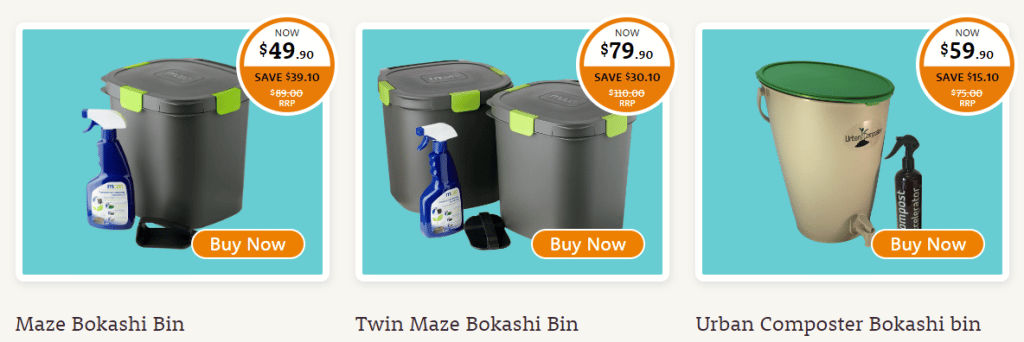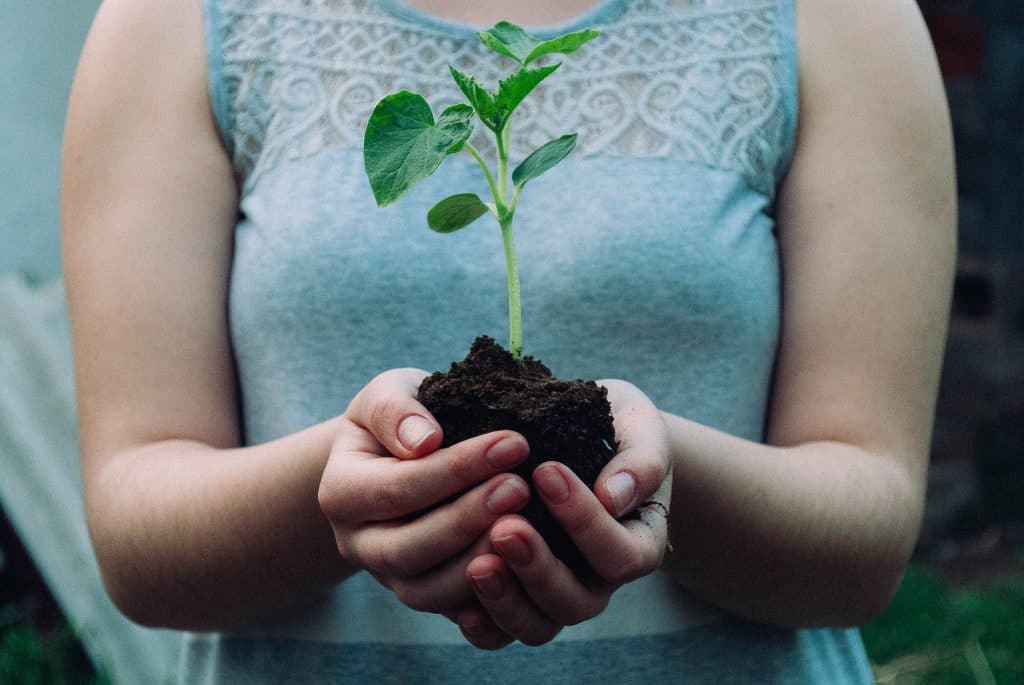Composting is an awesome way of reducing food waste and reducing landfill. It is also an excellent way to keep soil rich and full of nutrients, while simultaneously helping to reduce the need for both fertilizers and pesticides. Many people assume you need a garden to compost but that’s not the case. At Naturpac we are all about composting and our compostable packaging is perfect for home compost bins or systems. In this article we discuss the best ways to compost whether you have a garden or not!
The Best Items For Composting and What to Avoid
To start your composting process, you’ll need the proper materials. Here is a great list of acceptable kitchen items to help you get started. Also included are items that are not suitable for composting and should be avoided. Keep in mind you should always check in with your local council to see if they have composting facilities in your local waste streams, and that different compost bins purchased from local stores and suppliers may also have different guidelines for what to / what not to compost. The below is a general guideline:
| Best Compost Items (Use These) | Worst Compost Items (Do Not Use) |
| Tea leaves | Plastics (check if these can be recycled) |
| Coffee filters (100% natural) | Glossy or coated paper |
| Fish bones (crushed) Note: bury deep to avoid odors | Shredded or torn clothing (may contain harmful chemicals or dyes) |
| Tofu | Cigarette butts |
| Vegetables | Diseased or infested plants |
| Fruit and vegetable peels (no citrus peels) | Garlic scraps, onions, citrus peels |
| Potato peels | Rice |
| Old oatmeal | Leather goods |
| Stale bread, pita and tortilla Note: bury deep in pile to deter scavengers and pests | Dryer lint (might contain plastic) Note: Use lint from cotton products only |
| Old or moldy pasta sauce | Bakery products |
| Popcorn | Eggs |
| Toothpicks, chopsticks, wine corks | Dairy products |
| Pizza boxes (not waxed) | Fat based condiments and foods |
| Corn cobs (chopped into smaller pieces) | Dead animals |
| Stale beer, stale wine | Sawdust |
| Napkins, paper towels, paper towel rolls | Weeds |
| Compostable Packaging | Plants treated with herbicides (includes grass clippings) |
| Egg shells (crushed) | Charcoal ash |
What About Compostable Packaging?
If you have compostable packaging to dispose of such as the Natupac Earthcycle Palm Fibre Trays, the Sinclair EcoLabels or any of The Paper People products these can all be easily composted in your at home or in office compost system.
Best ways of composting your compostable packaging is to cut it up into small pieces, so that it is easily mixed through the compost.
Create Your Own Compost Bin
Once you have your acceptable compost materials, it’s time to get started. There are two popular ways to make compost without a garden: a traditional compost bin and worm compost bin.
Traditional Compost Bin
A traditional compost bin can be used indoors and placed under your kitchen sink:
Instructions
- Use a 1 square meter metal or plastic container with a lid for your compost
- Drill small holes in the sides and bottom of your container
- Place the bin in a watertight tray
- Cover the bottom of the tray a layer of newspaper
- Place the compost container inside the tray
- Add several inches of soil to the tray (around the compost bin)
Note: to help improve the quality of your compost, try the following tips:
- To speed up the process, make food scraps smaller (or cut up your compostable packaging or shred)
- Keep the compost moist
- Turn the contents over every few weeks
- Add newspaper each time you add food to the compost
- Add new soil weekly
Worm Compost Bin
The worm compost bin requires less maintenance and upkeep than the traditional bin. This is because the worms help to speed up the compost process.
Instructions:
- Buy worms (up to 1000) from a garden center like Bunnings or store that sells worms
- Use a wood, plastic, or stainless steel storage container with a lid for your compost
- Place in indoor space (under kitchen sink or other area)
- Drill small holes on the sides and bottom so the worms can breathe
- Add straw, damp newspaper or cardboard to the bottom of the bin
- Add soil to cover the bottom
Notes: The following tips will improve the quality of your worm compost.
- Start with just a few select scraps for the worms such as tea bags, coffee grounds, eggshells, and non-acidic vegetables
- Over time, add more variety of scraps
- Keep the compost moist
- Discard any rotted or moldy food
- If you see black flies near the compost bin, that means you’re overfeeding the worms
- The lid will prevent the worms from venturing outside the bin (along with a continuous supply of food)
Don’t Have Time to Make Your Own?
You can buy plenty of compost bins and systems that are suitable to any home, you really don’t need to have a large or garden in order to compost and there are items suitable for apartments as well!
There is a fantastic business based in Australia that sells a variety of compost systems perfect for the home, for apartments, for small or large gardens. Anything from worm farms, to tumblers to bokashi bins!
COMPOST REVOLUTION
The Compost Revolution makes it easy for Australians to build greener, healthier, more resilient communities. We do this by inspiring them to nurture their soil to grow lush green gardens and delicious organic food.
About half of what the average Australian household throws out is compostable organic material, so using home composting systems significantly reduces the amount of stuff we send to landfill. It also helps with climate change because food waste releases harmful greenhouse gases as it breaks down in landfill.
Currently working with 36 councils across Australia, the Compost Revolution is an award-winning platform that inspires, educates and equips households so they can recover their food waste. Our fun online tutorials and integrated ordering system allow residents to choose their composting gear and have it delivered straight to their door.
The Compost Revolution started in 2010 as a joint workshop-based education initiative in the Eastern Suburbs of Sydney between three neighbouring councils, Waverley, Randwick and Woollahra, as part of the 3-Council Regional Environment Program, established with funding from the NSW Environmental Trust.
Some of the products:


How Long Does It Take to Compost?
The length of time it takes to compost can range from 2 weeks to 6 months. Key factors include the following:
- The size of the compost
- Ingredients in the compost
- Temperature
- How often the pile is turned (traditional composts)
Your compost is ready when it smells like soil, is dark and crumbly. If the food scraps aren’t decomposing in a timely manner, chop them up into smaller pieces. If the compost has a foul odor, this could be a sign of too much green material or not enough air, which will also delay the compost process. Compostable packaging should compost quickly if cut up or shredded.
Using Your Compost
In addition to gardens, compost can be used to fertilize houseplants, lawns, trees, bushes, and flowers. Another option is to give the excess compost to neighbors with gardens or houseplants or donate to a local farm, school garden or community garden.
There are several ways to add compost to plants:
- Compost tea. Put compost in a pillowcase and place in a bucket of water for 48 hours. When the water is dark brown, fill up a spray bottle and apply to the plant’s leaves and roots.
- Compost mulch. To use as mulch, remove all grass and weeds from the selected area. Spread an even amount over the soil, carefully avoiding any plant stems or roots.
- Digging holes. Dig holes in the soil and fill partially with compost. Top off the hole with regular soil.
Summary
Contrary to popular belief, you do not need a garden to compost. A successful compost can be created at home with table scraps and used to maintain the health of your houseplants, lawns and indoor gardens. It is also a great way to help the environment by decreasing the need for pesticides and fertilizers. Give composting a try. Your plants will thank you.
Want to learn more about Naturpac?
Naturpac are an eco friendly packaging company in NSW, Australia created by J-Tech Systems to bring a new level of farm produce sustainable packaging to the fresh produce industry. Environmental packaging and sustainable produce packaging are Naturpac’s specialty with a focus on recycled packaging, recyclable packaging, biodegradable packaging and compostable packaging. They are passionate about sustainability education, especially sustainability education in schools and for children to help young consumers of today shape the world for tomorrow.
Naturpac offer a broad range of fresh produce packaging supplies that are environmentally friendly. If you are in the fresh produce industry check out their range of The Paper People, Netpak, Earthcycle, Infia and Stepac along with Sinclair Ecolabels. Their Gold Standard range of compostable packaging is recommended for many fresh produce items and are very price competitive compared with other non eco packaging solutions.
If you are a parent, teacher or community organisation wanting to learn more about the EcoChoice Online Sustainability Learning Platform or Ecoplay education sessions reach out to the friendly team at Naturpac. We offer sustainability education throughout the school holidays and have a variety of at home kids activities or indoor activities for kids that will teach them how to make sustainable choices in their future for a better earth.
